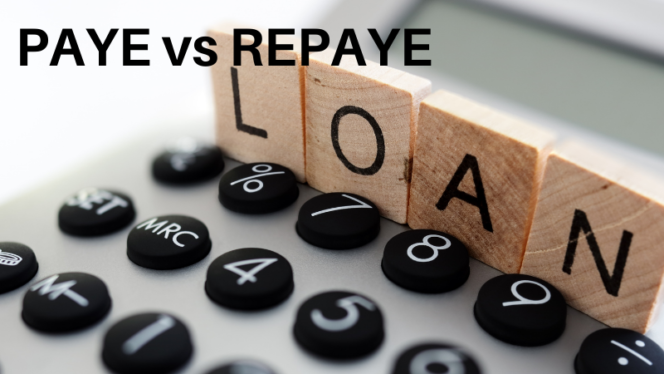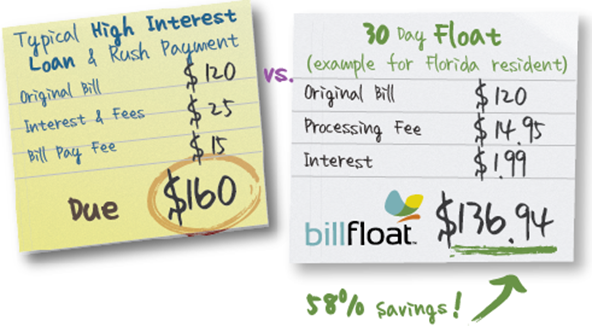PAYE vs REPAYE for Student Loan Repayment

If you’re having difficulty making those federal loans, then you might want to consider an Income-driven Repayment (IDR) program such as the Pay As You Earn (PAYE) or the Revised Payment As You Earn (REPAYE) could be a solution.
PAYE vs REPAYE are repayment programs to repay federal student loans. They make your monthly payment 10% of your income discretionary. When you’ve made 20-25 years of repayments, the balance remaining is paid off.
The decision between PAYE and REPAYE is based on the severity of your financial burden, your preferred repayment time, and whether or not you’re married. Paying by cash is generally the preferred choice for couples who are borrowing.
Let’s see the PAYE vs REPAYE differences more in-depth.
TABLE OF CONTENTS:
- What is PAYE – Pay As You Earn Student Loan?
- What is REPAYE – Revised Pay As You Earn Student Loan?
- PAYE vs REPAYE Student Loan
- Do I need to Recertify My Income and Family Size Annually?
What is PAYE – Pay As You Earn Student Loan?
Repayment length: 20 years
Payment amounts: 10% of your discretionary earnings divided by 12
Other qualifications: Must have a Direct Loan or Direct Consolidation Loan
Best for: Spouses with two incomes; grad debt; those with low earning potential; borrowers eligible for Public Service Loan forgiveness
Are you eligible for PAYE: Check out the Loan Simulator
Federal student loan borrowers with newer federal loans can use the Pay As You Earn (or PAYE) repayment plan. This caps your monthly payments equal 10% of your discretionary earnings divided by 12 but not more than the 10-year Standard payment amount.
PAYE can also be used as a repayment plan by borrowers eligible for Public Service loan forgiveness.
To be eligible for PAYE, you must have:
- borrowed your first federal student loans after October 1, 2007.
- taken a direct loan or a Direct Consolidation loan after October 1, 2011.
- borrowed money for college during the 2008-09 academic school year.
- been in school during 2011-12.
Individuals who are not eligible for PAYE might be eligible for the Revised Payment As You Earn (REPAYE) repayment plan.
Pay As You Earn has a 10% cap on capitalized Interest. This is a significant difference from other income-driven plans. Capitalized Interest is an added interest to the loan balance, which increases the amount you owe.
Let’s take, for example, a $100,000 loan with $15,000 interest. You could leave PAYE to add 10%, or $10,000, to your balance. You could also capitalize the whole $15,000 with other plans, which would add $5,000 to your balance and allow future Interest to grow on a larger balance
How to Apply for PAYE Student Loan?
You need to enroll in Pay As You Earn by directly sending a completed income-driven repayment request to your student loan servicer.
However, it is easier to do the process online. You can modify your student loan repayment plan anytime. Note that there is no application fee.
- Visit Federal Student Aid. Log in to your ID or create an account for yourself if you don’t already have one.
- Select income-driven repayment plan request. You can preview the form to see what documents you need, such as your tax return or alternative proof of any taxable income earned in the last 90 days.
- Select your plan. You can choose to be automatically placed in the lowest-paying plan if you are eligible for more than one income-driven repayment plan.
- Please complete the application. Complete the application. Include the information of your spouse, if any, because it can affect your PAYE payments.
While processing your application, your servicer may place your loans in forbearance. While you are not required to make any payments during the forbearance period, your loan will accrue interest. This will increase your owe.
Can You Temporarily Self-Report Income?
According to the Education Department, borrowers can self-report their income until July 31, 2022, when they apply for or recertify an income-driven-repayment plan. This means you don’t need to provide tax documentation when reporting your income. You can complete this online by submitting the IDR application as usual. Step 2 selects “I’ll submit my income information.” In December 2021, the Student Loan Servicing Alliance announced that borrowers could also self-certify over the phone.
You must submit the income-driven repayment application each year to continue on the Pay As You Earn program. Your payments will also change if your income changes.
You will be charged the same amount as the standard plan if you miss the recertification deadline or earn too much to qualify for PAYE. At that time, any interest earned will be capitalized or added to your principal balance.
What is REPAYE – Revised Pay As You Earn Student Loan?
Repayment length: 20 or 25 years
Payment amounts: 10% of your discretionary income
Other qualifications: Must have federal direct loans.
Best for: Non-married borrowers; higher incomes; no grad debt
Revised Pay As You EARN has the greatest difference: it offers an interest subsidy. This is how interest accumulates quickly. Most income-driven plans will subsidize the difference between your repayments and accrued interest at specific points. Income-driven payments can be as low as $0 and may not offset the interest accruing on your loans.
REPAYE offers a generous subsidy that is more generous than other income-driven plans. It pays the total amount on subsidized loans and half of the unsubsidized loans’ difference for the first three years. It covers half of the difference between both types of loans.
Let’s have an example.
We have:
- $40 000 – subsidized loans
- $120 000 – unsubsidized loans
- 5% interest rates (for both)
Your subsidized loans would earn – ($40 000*0.95)/12 = $167 per month ($2000 for the whole year)
Your unsubsidized loans would earn – ($120 000*0.95)/12 = $500 per month ($6000 for the whole year)
For the first three years of REPAYE, you will have $0 payments if you are eligible.
If you are not eligible, the government will pay $167 plus half the $500 (or $250).
REPAYE offers many of the same benefits as PAYE but applies to all Direct Loans. REPAYE caps your monthly payments at 10% of your discretionary earnings and is a qualified repayment plan that you can use to get Public Service Loan Forgiveness.
However, if your loans were all used for undergraduate studies, they will be forgiven only after 20 years of payments. If you have any remaining debt you did not use for graduate studies, it will be forgiven within 25 years.
How is REPAYE different from the other income-driven repayment plans?
You already know that the income-driven plan will pay a percentage of your income. REPAYE differs from other plans.
No income requirements to join the plan.
Unlike the IBR and PAYE plans, borrowers do not have to prove that their income is lower than their federal student loans debt to be eligible for REPAYE. This means that your income and debt amount won’t prevent you from qualifying.
Borrowers who have only undergraduate loans will be subject to a longer repayment period than those who have graduate loans.
If you are only repaying loans you borrowed as an undergraduate student, REPAYE will allow you to repay your loans for up to 20 years.
If you are repaying a loan you have received as a graduate or professional student, you can repay it for up to 25 years.
Suppose your loan later grants Public Service Loan Forgiveness. Your loans would be forgiven after 10 years.
Mortgage payments for married borrowers are calculated differently.
If you have a joint federal income tax return, other income-driven repayment plans use your combined income to determine your payment only. The amount of your monthly payment is determined solely by your income. REPAYE (with some exceptions) uses your combined income to determine your monthly payment amount. This applies regardless of whether or not you file separate tax returns, which could result in a higher monthly payment.
The REPAYE payment amounts are not limited to the 10-year standard amount. No matter how much your income rises, your monthly payment will be 10% of your discretionary income. Your REPAYE payment may increase if you earn more than what you pay under the 10-year Standard Repayment Plan.
REPAYE offers a greater interest benefit.
If your payment does not cover your interest, REPAYE pays a higher percentage than PAYE. This will help keep your loan balance in check and reduce the overall cost of your loans.
PAYE vs REPAYE Student Loan
People with high-income potential and large amounts of debt, such as doctors and dentists, might want to consider factors like the PAYE’s monthly payment caps and REPAYE’s superior interest subsidy.
| PAYE vs REPAYE | REPAYE | PAYE |
| Repayment length | 20 years if all loans were received for undergraduate study 25 years if any loans were received for graduate or professional study | 20 years |
| Payment amounts | Generally 10% of your discretionary income. | 10% of your discretionary earnings divided by 12 |
| Eligible | Any borrower with eligible federal student loans. | You must have at least partial financial hardship. You must have been approved for a federal loan after October 1, 2007, and not have any outstanding federal loans. You must also have received a loan disbursement or consolidation on or after October 1, 2011. |
| Does your spouse’s income count? | Yes | No |
| Interest subsidy | For the first three years of REPAYE, the government will cover 100% of any unpaid interest. If you are not eligible, the government will pay the subsidized loans plus half the unsubsidized loans. | For the first three years, the government will cover 100% of any unpaid subsidized interest. |
| Eligible for loan discharge | Yes | Yes |
| Payment cap | No payment cap | Will never exceed your payment under a standard repayment plan |
The repayment term for PAYE is 20 years.
Your education level determines the repayment terms for REPAYE. If all your loans were used for undergraduate education, your loan term would be 20 years. Graduate school loans will have a 25-year repayment period.
Interest subsidy.
The way interest is managed depends on the repayment plan. REPAYE covers half the interest on unsubsidized loans. PAYE will hold you responsible for all interest costs if you have unsubsidized loans.
REPAYE has more straightforward qualification standards.
You don’t need to prove financial hardship to be eligible for the plan. REPAYE could be an alternative to PAYE if you are concerned about your eligibility.
PAYE caps your payment size.
You won’t be eligible for PAYE if your monthly payment exceeds the 10-year standard repayment plan.
Single borrowers generally find REPAYE more attractive than other options.
Your monthly REPAYE payment could be higher if you are married or intend to get married.
PAYE forgives remaining graduate debt sooner.
PAYE may forgive eligible loans for graduate study after twenty years. You must be a member of REPAYE for at least 25 years to become eligible for any graduate debt forgiveness.
Marital Status.
The loan servicer will use your spouse’s information to calculate your monthly payment for REPAYE. This applies even if you have separate tax returns. PAYE works differently. If you file individual tax returns, it will only consider your income when calculating your monthly payments.
Eligible loans.
You are eligible for REPAYE on all direct federal loans. The availability of PAYE for new direct loan borrowers is limited.
Monthly payment cap.
PAYE will not exceed the monthly payment that you would make under a standard repayment program. REPAYE, however, does not have a payment limit.
Do I need to Recertify My Income and Family Size Annually?
Recertifying your income and family size within the prescribed annual deadline is crucial. The consequences of failing to certify your income by the specified deadline can vary depending on which plan you choose.
- If you fail to recertify your income within the annual deadline under the REPAYE Plan, you will be removed from that plan and put on an alternate repayment plan. Your income is not the basis of your monthly payment under this alternative repayment plan. Instead, your payment will be the amount required to repay your loan in its entirety by the earlier of:
- 10 years from the date you start repaying the alternative repayment plan;
- Or the end date of your 20-year or 25-year REPAYE Plans repayment period. You can cancel the alternative repayment plan or repay under another repayment plan.
- If you fail to recertify your income within the annual deadline under the PAYE Plan, you will continue on the income-driven repayment plan, but your monthly payment won’t be based on income. Instead, the required monthly payment amount for the Income-Driven Repayment Plan will be the exact amount you would pay under a Standard Repayment Plan, with a 10-year term and based on the loan amount. If you have updated income information and your servicer still considers you eligible to make income-based payments, you can go back to making income-based payments.
- Suppose you fail to recertify your income before the annual deadline under REPAYE and PAYE (or both). You will pay interest on the principal balance of the loan, which will lead to an increase in the cost of your loans. Any unpaid interest will become capitalized (added to your principal loan amount).


